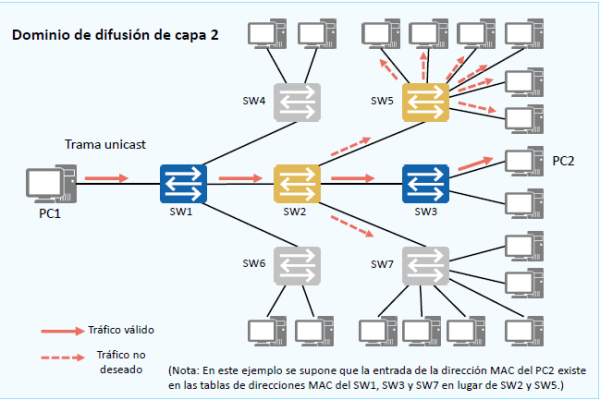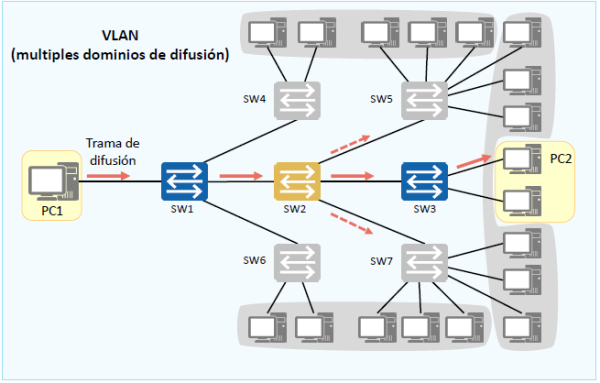huawei:switch:vlan_principles_and_configuration
Table of Contents
VLAN PRINCIPLES AND CONFIGURATION
Ethernet technology implements data communication through shared media based on collision detection multiple access (CSMA / If there are a large number of computers on the Ethernet, security risks and broadcast storms can occur, deteriorating network performance and even causes network failures.
Therefore technology virtual local area network (VLAN) is introduced to solve the above problem.
This course describes the basic principles of VLANs, the operating principles of the different Layer 2 interfaces, VLAN applications, the principles of sending data, and the basic methods of VLAN configuration.
1. What is VLAN?
Problems of a traditional ethernet network
- In a typical switching network, unknown broadcast frames or unicast frames sent by a host PC are flooded throughout the broadcast domain.
- The wider the broadcast domain, the more serious the network security and unwanted traffic problems.
VLAN
VLAN technology isolates broadcast domains.
Characteristics:
- Geographically independent.
- Only devices on the same VLAN can communicate directly at Layer 2.
VLAN principles
VLAN implementation
- Switch 1 and Switch 2 belong to the same company network. VLANs are planned for the network, with VLAN 10 for department A and VLAN 20 for department B. Employees in departments A and B connect to switch 1 and switch 2.
- Suppose that a frame sent from PC reaches switch 2 through the link between switch 1 and switch 2. If a proper configuration is not implemented, switch 2 cannot identify the VLAN to which the frame belongs or determine the VLAN local to which the frame should be sent.
huawei/switch/vlan_principles_and_configuration.txt · Last modified: 2020/12/29 03:06 by hvillanueva



